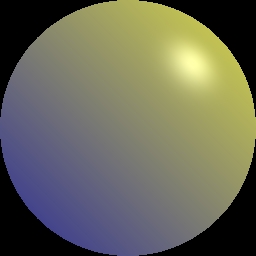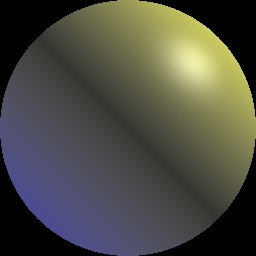
 |
We evaluated the whole shading equation in a Phong environment map. In using an environment map as shown in Figure 10, all normals in eye-space are mapped to a 2D texture. This shading only is valid in eye-space, but it is possible to extend these to view-independent environment maps [9]. The cool-to-warm and light ``splashback'' terms mentioned in Section 3.2 are a function of the light direction and could be implemented with this representation. However, the Phong term would have to be computed for each view even though a single light source could be implemented as a single 1D texture map instead of a full 2D texture map.

 |